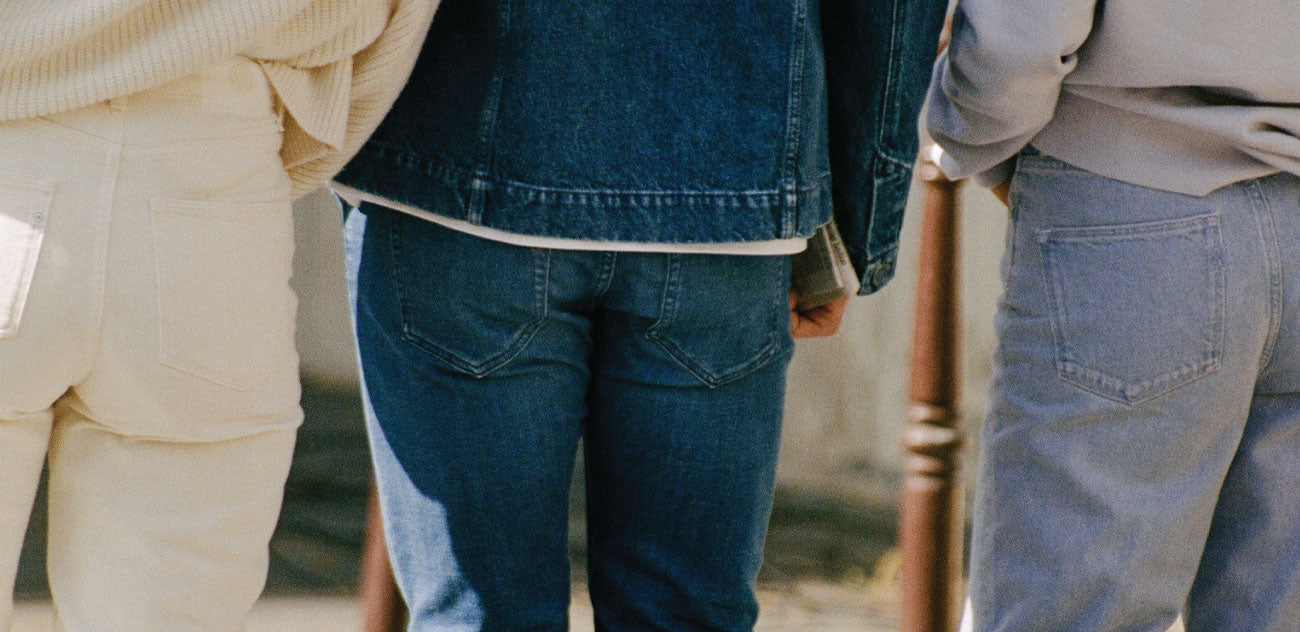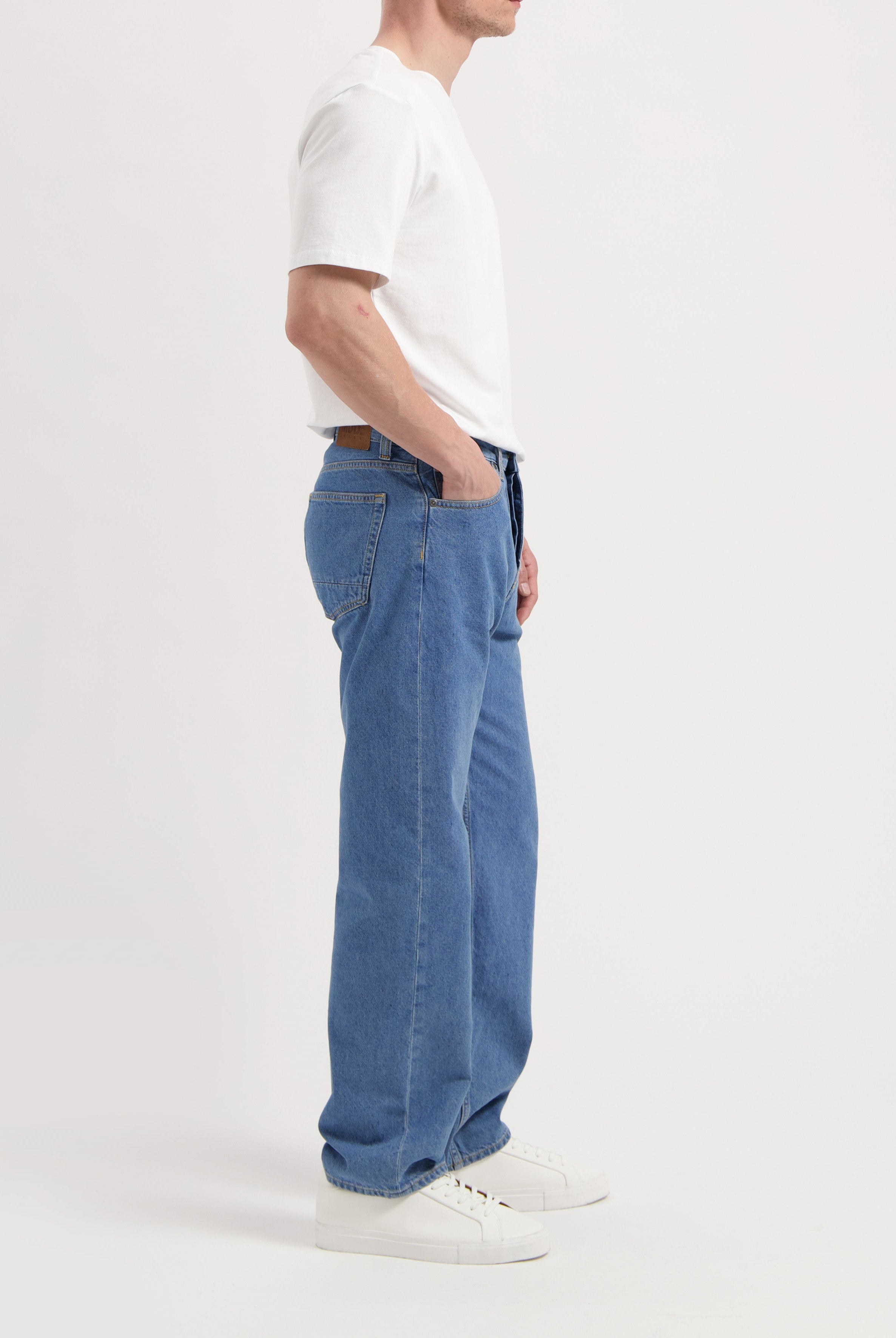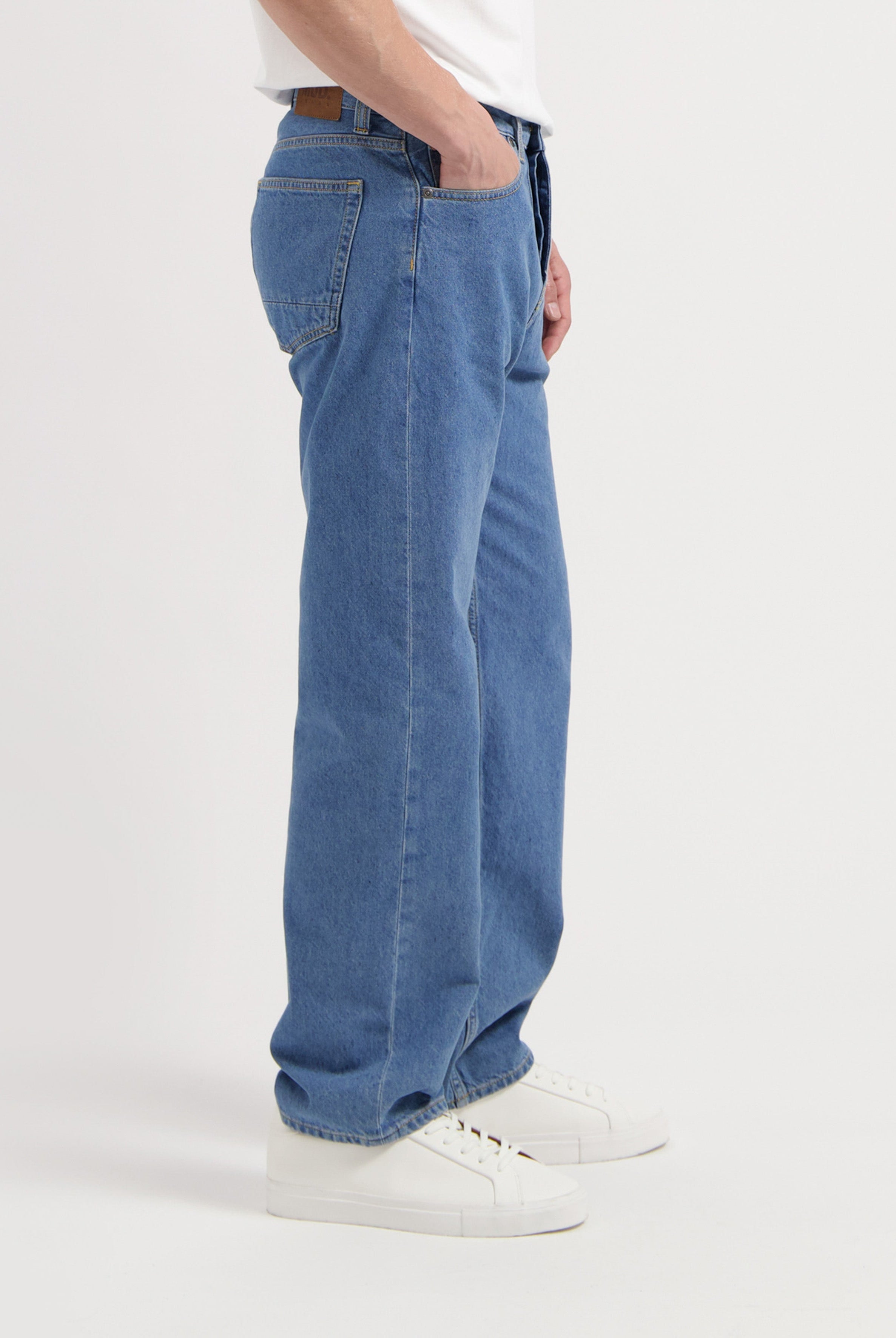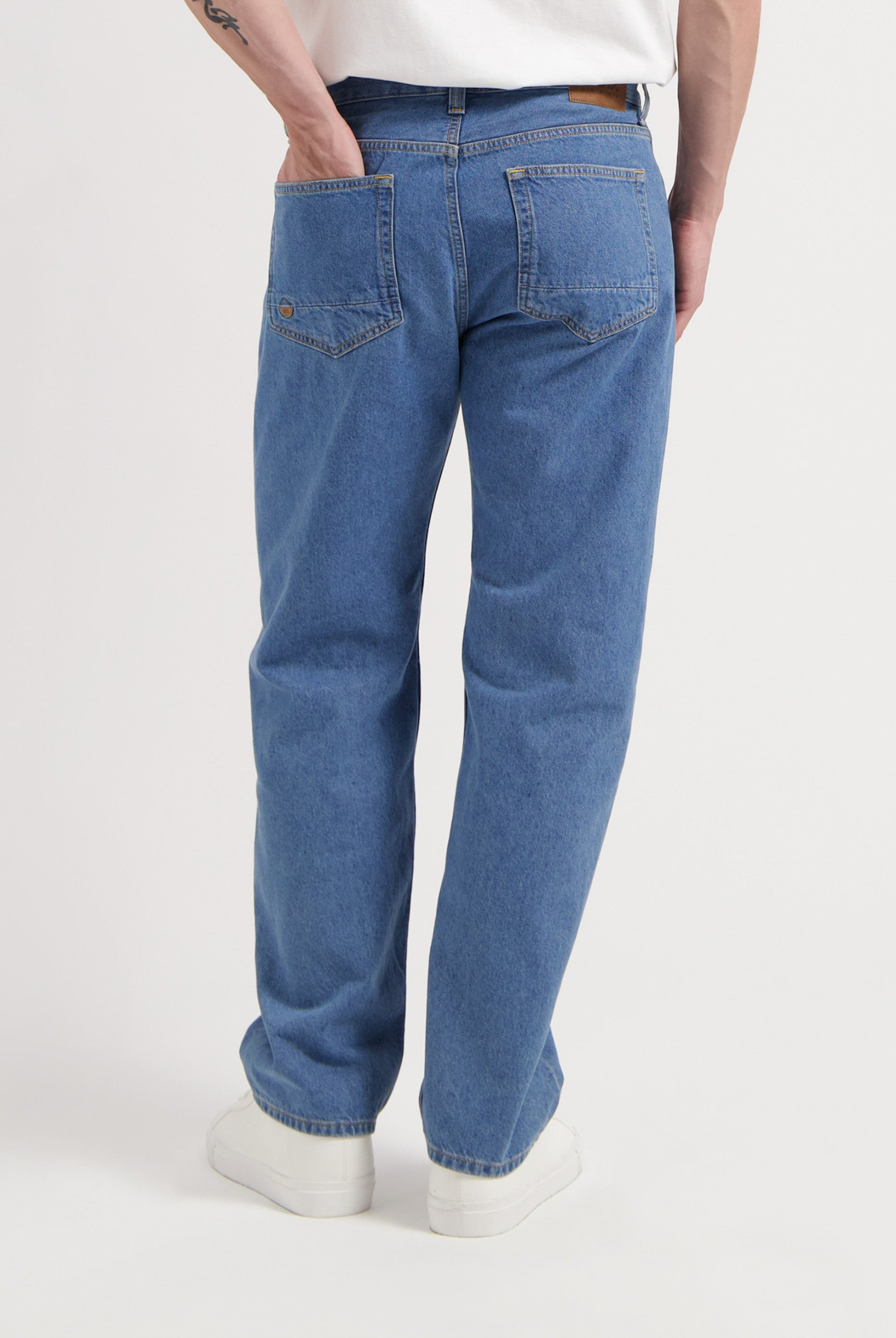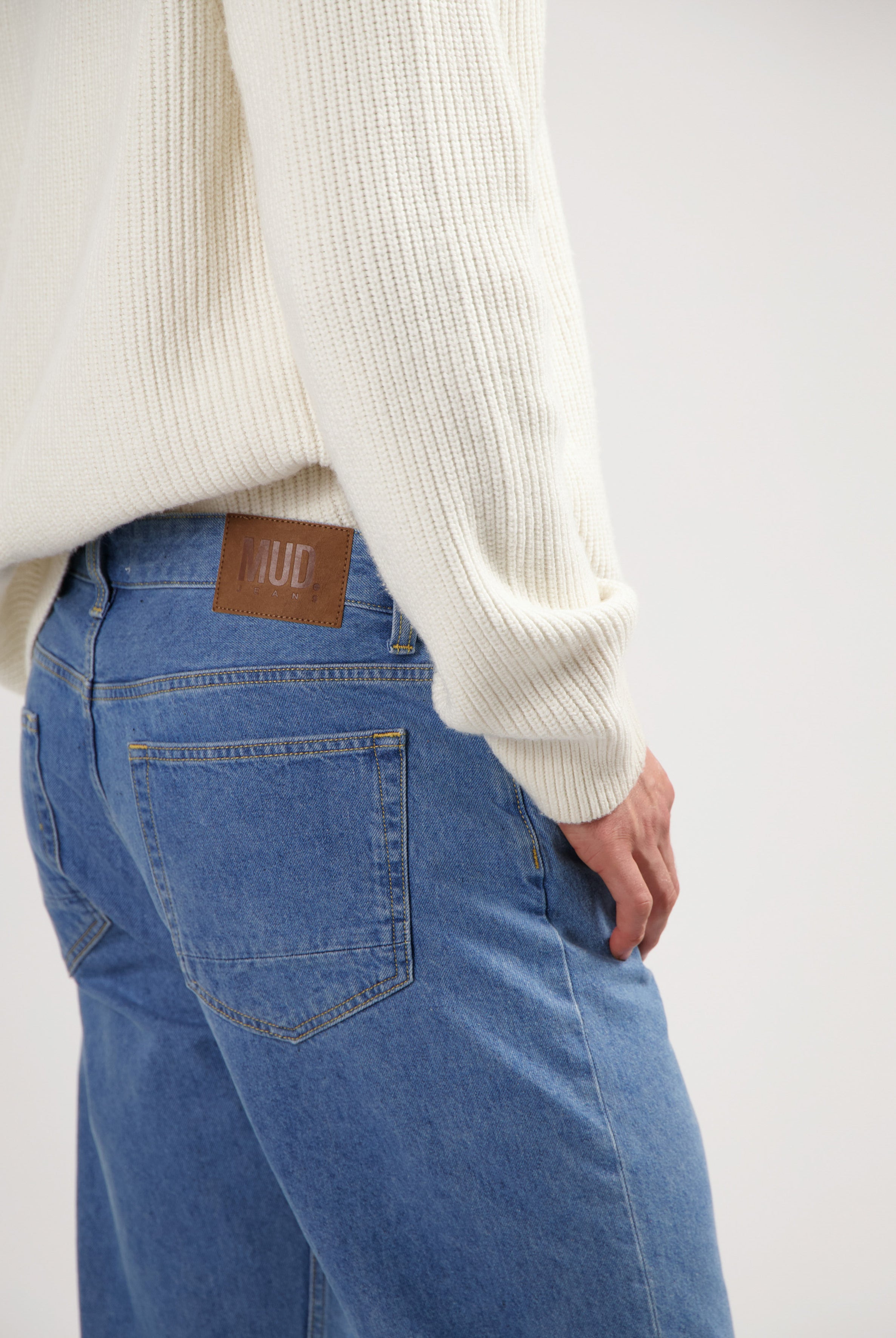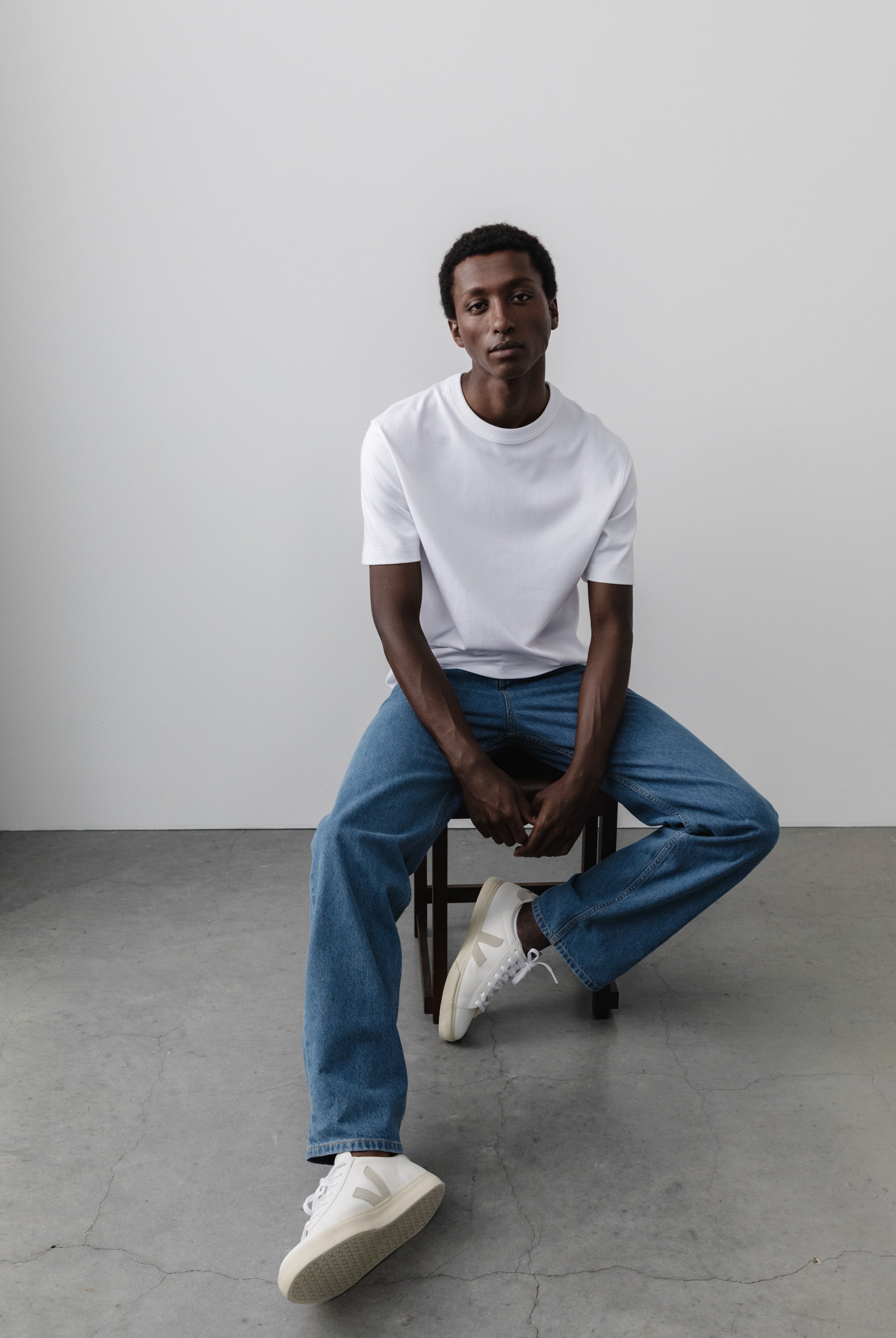Der Klimawandel hat Nachhaltigkeit im Jahr 2025 zur Notwendigkeit gemacht. Besonders in der Modebranche, einem der größten Umweltverschmutzer, ist Nachhaltigkeit kein optionales Ziel mehr, sondern eine dringende Verpflichtung. Zum Glück bewegen wir uns in die richtige Richtung. Nachhaltige Mode wird immer beliebter – wir sprechen nicht mehr von einem Trend, sondern von einem echten Lebensstil. Du willst wissen, welche nachhaltigen Modetrends 2025 wichtig sind? In diesem Artikel findest du 15 davon.
In diesem Artikel:
- Die 15 aktuellen Trends in der nachhaltigen Mode 2025
- Warum nachhaltige Mode bei MUD Jeans die richtige Wahl ist
- Häufig gestellte Fragen zu nachhaltiger Mode
Die 15 aktuellen Trends in der nachhaltigen Modeindustrie 2025
1. Zirkularität
Zirkuläre Mode bedeutet, Materialien wiederzuverwenden und richtig zu recyceln, um Abfall zu minimieren. Ziel ist es, Textilien möglichst lange im Umlauf zu halten und die Wegwerfmentalität ("take-make-dispose") zu durchbrechen.
Fun fact: MUD Jeans verwendet bereits bis zu 40 % recycelten Denim in jedem Produkt und arbeitet daran, diesen Anteil auf 100 % zu steigern.

2. On-Demand-Mode
On-Demand-Fashion ist das Gegenteil von Massenproduktion. Kleidung wird nur dann gefertigt, wenn du sie bestellst. Das bedeutet keine Überproduktion und keinen Textilabfall.
Zur Einordnung: In Europa bleiben durchschnittlich etwa 21 % der produzierten Textilien unverkauft. Zwischen 264.000 und 594.000 Tonnen Kleidung werden jährlich vernichtet, bevor sie überhaupt verkauft wurden.
3. Nachhaltige Materialien
Designer:innen werden immer kreativer, was nachhaltige Materialien betrifft. Bio-Baumwolle oder recyceltes Leinen sind bekannt, aber 2025 gibt es auch Taschen aus Ananasleder oder biologisch abbaubare Kleidung aus Pilzen. Diese Materialien sind nicht nur umweltfreundlich, sondern auch Statement-Pieces für deinen Kleiderschrank.
4. Slow fashion
Ein weiterer nachhaltiger Modetrend ist Slow Fashion. Slow Fashion geht es um bewusste Entscheidungen und faire, nachhaltige Produktionsprozesse. Im Gegensatz zur Fast Fashion, die kurzlebigen Trends folgt, setzt Slow Fashion auf langlebige Kleidungsstücke aus umweltfreundlichen oder recycelten Materialien. Charakteristisch sind: höhere Qualität, faire Herstellung und zeitlose Kollektionen, die über Trends hinaus Bestand haben.

5. Minimalismus
Weniger ist mehr - Auch in der Mode setzt sich Minimalismus immer mehr durch. Der Fokus liegt auf einer reduzierten, hochwertigen Garderobe, bei der jedes Teil getragen und geschätzt wird. Das Ergebnis: weniger Konsum, mehr Stil und Langlebigkeit.
6. Umweltfreundliche Färbemethoden
2025 rückt die Verwendung von umweltfreundlichen Farbstoffen stärker in den Fokus. Herkömmliche Färbungen enthalten oft giftige Chemikalien, die Mensch und Umwelt belasten. Die Alternative: biologisch abbaubare, schadstofffreie Farbstoffe, die Nachhaltigkeit und Gesundheit verbinden.
7. Vegane Materialien
Vegane Mode boomt. Immer mehr Menschen achten nicht nur auf den ökologischen Fußabdruck, sondern auch auf das Wohl der Tiere. Vegane Materialien wie Hanffasern, Ananasleder oder Bio-Baumwolle sind tierfreundliche Alternativen zu Leder oder Wolle und genauso stylish.
8. Virtuelle Anproben
Online-Shopping ist praktisch, aber passt das Kleidungsstück wirklich? Virtuelle Anproben mit AR oder KI machen es möglich, die Passform digital zu prüfen. Das reduziert Rücksendungen und Verpackungsmüll erheblich und spart gleichzeitig Ressourcen.
9. E-Textilien
Was wie Zukunftsmusik klingt, ist längst in Entwicklung: E-Textilien. Elektronik wird direkt in Stoffe integriert, z. B. für Kleidung, die deine Herzfrequenz misst oder deine sportliche Leistung analysiert. Eine spannende Verbindung von Technologie und Mode.
10. Ethische Lieferketten
Nachhaltigkeit bedeutet auch Transparenz. Immer mehr Konsument:innen wollen wissen, woher ihre Kleidung stammt. Ethische Lieferketten stellen sicher, dass alle Beteiligten, vom Rohstoff bis zur Produktion, unter fairen und nachhaltigen Bedingungen arbeiten. Das schafft Vertrauen und verändert die Branche positiv.

11. Gesetzgebung
Nachhaltige Mode ist nun auch gesetzlich Thema. Die EU-Strategie für nachhaltige und zirkuläre Textilien setzt den Green Deal um. Ab 2030 müssen alle Textilprodukte in der EU nachhaltig, reparierbar und recycelbar sein. Das zwingt die Branche zum Umdenken – endlich.
12. Regenerative Landwirtschaft
Die Landwirtschaft hat weltweit negative Spuren auf Böden, Wasser und Biodiversität hinterlassen. Regenerative Landwirtschaft setzt auf Bodenverbesserung und Ressourcenschonung, auch in der Textilproduktion. Ein Beispiel: Recycling von Wasser durch Umkehrosmose.
13. Handwerkskunst
Handarbeit feiert ihr Comeback. Kleidung und Accessoires, die von Hand gefertigt werden, sind nicht nur Unikate, sondern sie erzählen auch eine Geschichte. Qualität, Präzision und ein langes Leben stehen hier im Vordergrund.
14. Technologische Innovationen
3D-Druck, KI-gestützte Trendanalysen, digital optimierte Schnitte, neue Technologien verändern Design und Produktion. Sie machen Mode nicht nur effizienter und individueller, sondern auch deutlich nachhaltiger.
15. Second-Hand-Kleidung
Preloved is here to stay. Second-Hand-Shops – online wie offline – erleben einen Boom. Was früher ein Nischenthema war, ist heute bewusste Wahl: nachhaltig, erschwinglich, individuell.
Setze auf nachhaltige Mode mit MUD Jeans

Die Trends 2025 zeigen: Die Modebranche befindet sich im Wandel. Zwar liegt noch ein langer Weg vor uns, aber Innovationen wie zirkuläre Produktion und der Second-Hand-Boom geben Grund zur Hoffnung.
Auch bei MUD Jeans geht es voran: Bis 2026 wollen wir 100 % Zirkularität erreichen, inklusive einer Kollektion aus 100 % recyceltem Denim aus Altkleidung. Mehr dazu findest du auf unserer Sustainability-Seite oder im aktuellen Nachhaltigkeitsbericht.









